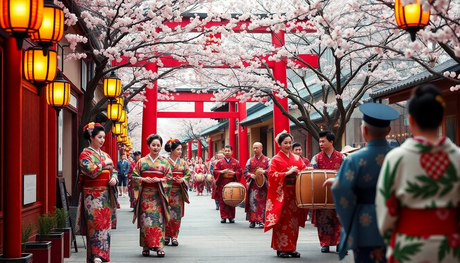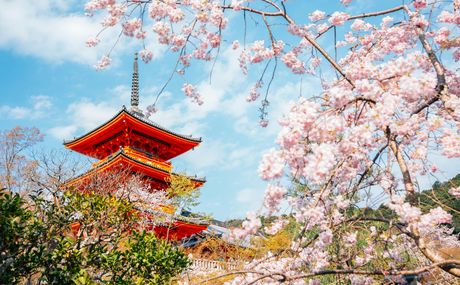Japan has always been a country known for its deep-rooted traditions, technological innovations, and unique culture. However, over the last 10 years, Japan has undergone significant changes in various aspects of life, from economy and technology to lifestyle and tourism. Whether you’ve visited Japan before or are planning your first trip, understanding how the country has evolved will give you a fresh perspective on modern Japan.
1. The Rise of Cashless Payments
For a long time, Japan was known as a cash-heavy society, but that has changed dramatically over the past decade. The introduction of digital wallets like PayPay, Rakuten Pay, and Line Pay has made contactless transactions more common, especially after the 2020 pandemic pushed businesses to adopt cashless payments for safety reasons. Convenience stores, restaurants, and even vending machines now widely accept credit cards and mobile payments, making it easier for tourists and locals alike.
2. Boom in Inbound Tourism (and the Pandemic Impact)
Between 2013 and 2019, Japan saw an unprecedented boom in international tourism, thanks to relaxed visa policies, aggressive tourism campaigns, and the global fascination with Japanese culture. Cities like Kyoto and Tokyo became crowded with foreign visitors eager to experience Japan’s temples, cherry blossoms, and unique cuisine. However, the COVID-19 pandemic in 2020 caused a temporary halt to this trend. While Japan closed its borders for nearly three years, tourism is now bouncing back stronger than ever, with a renewed focus on sustainable travel and off-the-beaten-path destinations.
3. Changing Work Culture: Remote Work & Work-Life Balance
The traditional Japanese corporate work culture, known for long hours and a rigid hierarchy, has gradually shifted in the past decade. The pandemic forced many companies to introduce remote work, a concept that was once rare in Japan. While not all industries have fully embraced flexible working conditions, the shift towards better work-life balance is becoming more noticeable, especially among younger generations who prioritize personal well-being over corporate loyalty.
4. Advancements in Technology and AI
Japan has always been a leader in technology, but the past decade has seen groundbreaking advancements in robotics, AI, and automation. From AI-driven customer service robots at airports to high-tech convenience stores with automated checkouts, Japan continues to push technological boundaries. Self-driving taxis and AI-generated content are also starting to shape the way people interact with technology in their daily lives.
5. Societal Shifts: Aging Population & Immigration
One of Japan’s most pressing issues is its aging population. The birth rate has continued to decline, leading to labor shortages in various industries. To combat this, the government has relaxed immigration policies, allowing more foreign workers to fill job vacancies, particularly in nursing, agriculture, and construction. Japan is slowly becoming more diverse, though cultural integration remains a challenge.
6. LGBTQ+ Rights and Gender Equality Progress
Although Japan has been slow to recognize LGBTQ+ rights, there have been significant strides in the last decade. More municipalities now offer same-sex partnership certificates, and public support for LGBTQ+ rights is growing. Likewise, the push for gender equality has gained momentum, with more women entering leadership roles, though challenges remain in achieving true workplace equality.
7. Revamped Infrastructure & Transportation
Japan is always improving its infrastructure, but the past 10 years have seen major upgrades, especially in preparation for international events like the 2020 Tokyo Olympics (held in 2021). The expansion of the Shinkansen (bullet train) network, improved airport facilities, and smarter public transport systems have made traveling around Japan smoother and more efficient.
8. Food Trends & Dietary Changes
Traditional Japanese cuisine remains beloved, but new food trends have emerged. Plant-based diets are becoming more popular, and international cuisines like vegan ramen, gluten-free sushi, and Korean street food have gained traction. The rise of convenience store gourmet has also changed the way people eat, with konbini (convenience stores) now offering high-quality meals that rival restaurant dishes.
9. The Growing Popularity of Digital Nomad Culture
With the rise of remote work, Japan has started catering to digital nomads. Cities like Tokyo and Osaka now have more co-working spaces, long-term Airbnb options, and visa programs that attract remote workers from around the world. Japan’s reputation as a tech-friendly country makes it an appealing destination for digital professionals.
10. The Influence of Pop Culture: Anime, J-Pop, and Beyond
Japanese pop culture has exploded globally over the past decade. Anime and manga have reached unprecedented levels of international recognition, with franchises like Demon Slayer, Attack on Titan, and Jujutsu Kaisen breaking box office records. The J-Pop and K-Pop crossover has also contributed to Japan’s cultural influence, making Japanese music more accessible to global audiences.
Final Thoughts
Japan’s transformation over the last 10 years has been remarkable. From technological innovations and cultural shifts to changes in work-life balance and tourism, the country continues to evolve while maintaining its unique traditions. Whether you’re a long-time Japan enthusiast or just discovering its charm, these changes paint a picture of a modern, dynamic, and forward-thinking nation.
As Japan moves into the next decade, it will be exciting to see how these trends continue to shape the country’s future. Have you noticed any changes in Japan during your visits? Share your thoughts in the comments below!
































